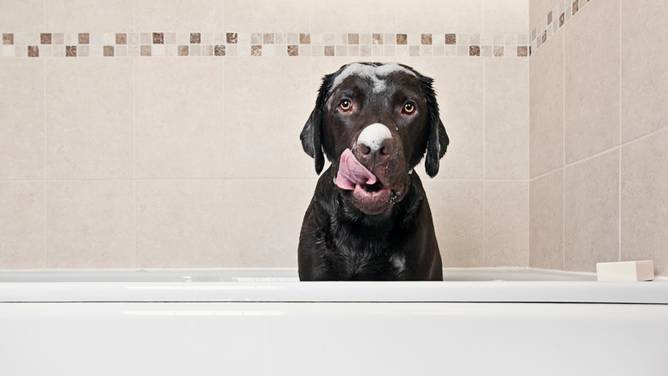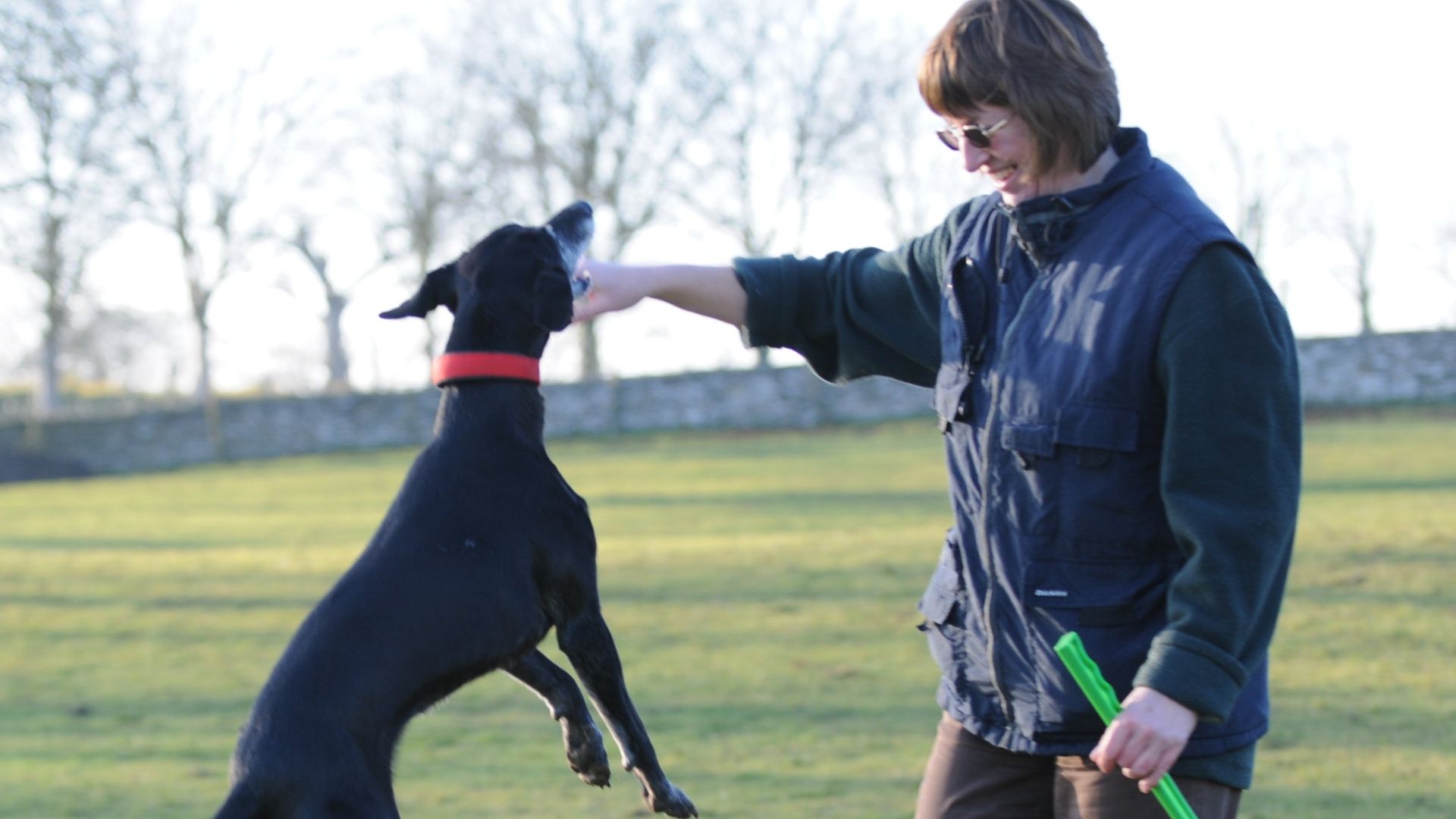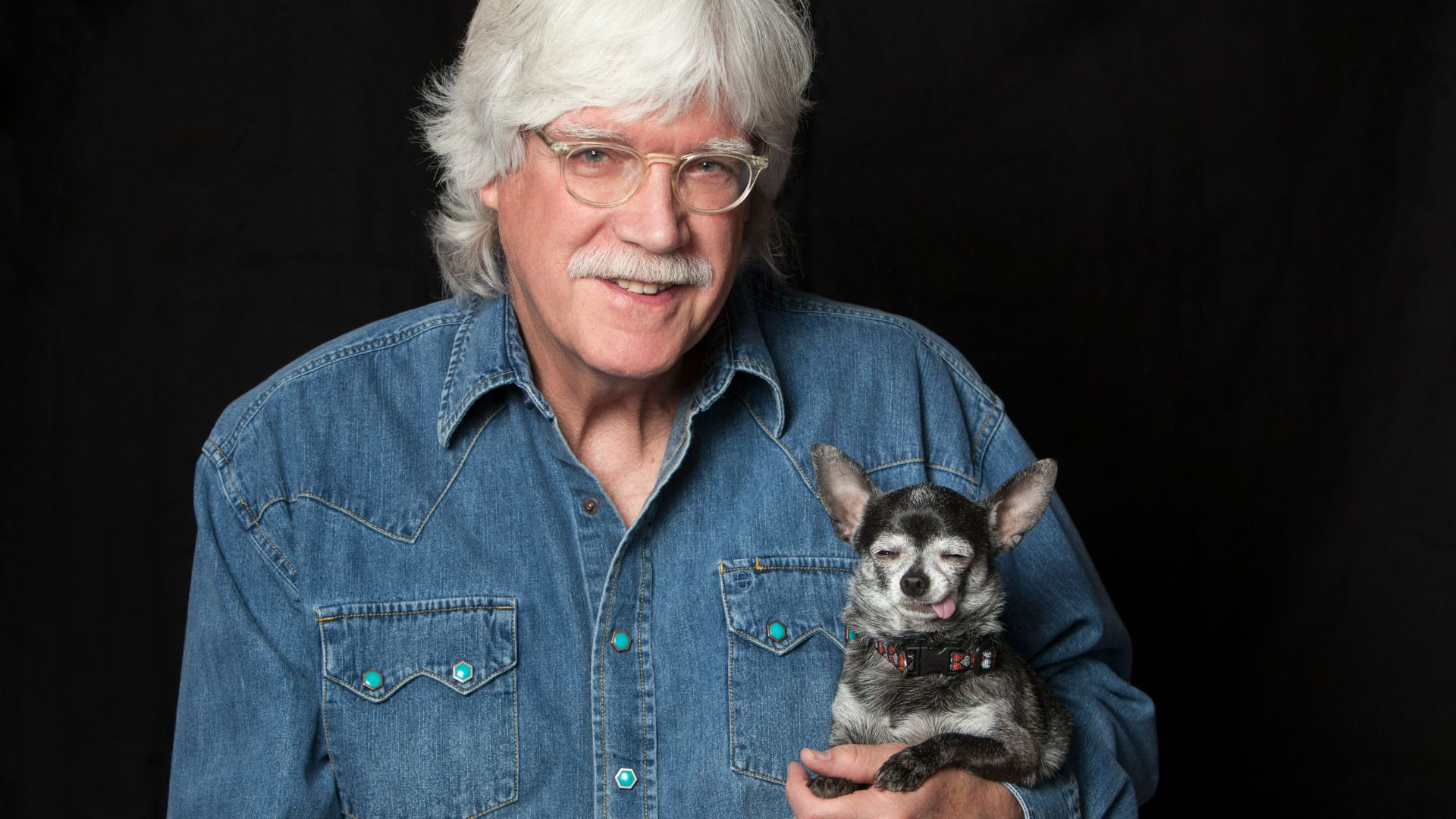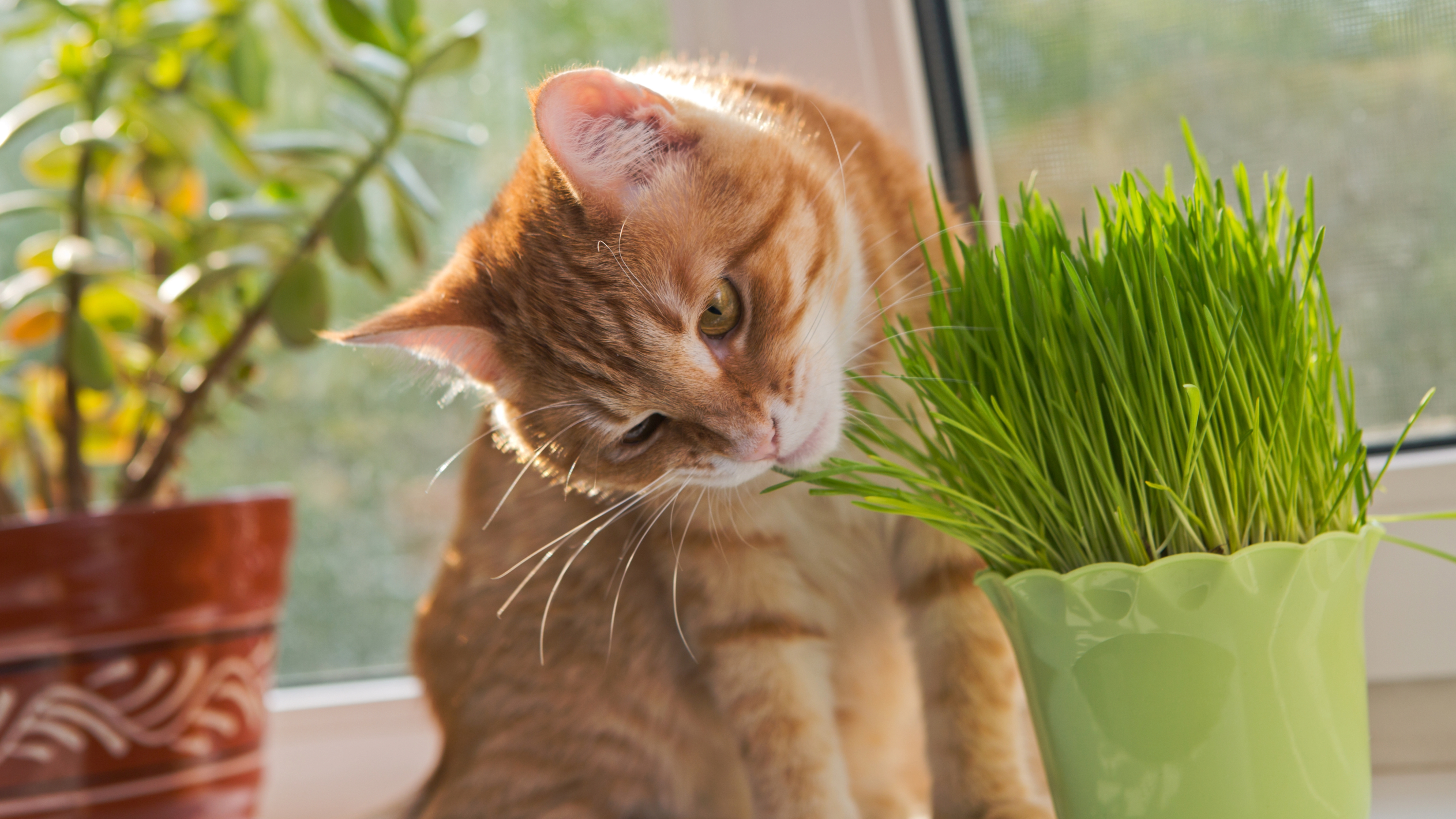Why do dogs hate baths? 6 top tips for cleaning your canine without stress
Why do dogs hate baths but love swimming? We explore how to placate your pooch during bath time

Pet owners are often puzzled by the question 'why do dogs hate baths?' when their furry friends will so readily jump into muddy puddles, lakes and streams at any given opportunity. Why do dogs like getting covered in mud, but don't like getting clean?
You may be ready with the best dog shampoo and best dog conditioner money can buy to treat your hound to a deluxe cleaning experience, but all too often they aren't. They are too busy hiding behind your legs at the sight of the bath tub, not to mention that dreaded shower head.
If this sounds familiar, don't worry. We are here to help with our guide to the reasons why bath time could be so off-putting to your pooch, and what you can do about it. Bathing your furry friend regularly is important, as you can see in our guide to how often you should bathe your dog, so below are our top tips on how to make the bathroom a fun place for your furry friend, rather than a stressful experience for them to avoid.
- How to give a dog a bath: A vet’s guide
- Dog shivering after bath? What you can do to help
- How to groom a dog: A vet's guide to brushing, bathing and clipping
1. The dog shampoo is causing irritation

Your pooch has a very good sense of smell, so that delightfully scented luxury shampoo you've bought to make them smell nice may well be overpowering for your dog. Your furry friend revels in smells we find disgusting, that's why they are so happy rolling around in mud and dirt, and why dogs eat poop for fun, much as we try to stop them!
Strongly scented soap and shampoos can be a major turn-off for your four-legged friend and means that they associate the bathroom with an unpleasant experience. It's also one that lingers long after the bath until they can find something nicer to roll in to get rid of that distressing smell. Strong detergent shampoos can also cause skin irritations, making it a doubly disagreeable experience for your dog.
If your dog does have sensitive skin, it's worth finding non-allergenic shampoos. Our guide to the best dog shampoo can help here, as well as helping you track down fragrance-free options.
- Can you use baby shampoo on dogs? A vet answers
- Can you use human shampoo on a dog?
- Homemade dog shampoos: 6 DIY natural dog shampoo recipes
2. They've experienced previous trauma

Fear of bath-time is unlikely to be because they are nervous of water – most dogs love jumping in to water wherever they find it. However, it's possible that previous experiences in the bathroom when younger could have taught them that it's a place to be avoided.
This may be because previously the water in the bath was too hot, that they were punished when they tried to leave it, or some other reason which causes them to have negative feelings associated with the experience.
You need to make the bathroom a welcoming place. Maybe spend some time in the room with them petting and giving them treats when it isn't bath time. Let them associate the area with fun, not just enforced cleaning. Hide treats in and around the bath to encourage them to explore it on their own too.
Letting them retrieve their favorite toy from the tub may well mean they are happier to get in and out. Introduce them to the shower head when in the bath with them, while petting them and showing them praise. Get out and run the shower away from them while giving them treats so they get used to the noise. Patience is key here, so wait until they seem acclimatized to the bath and its many 'dangers' before attempting to actually bathe them.
3. They struggle to find their footing

When you place your dog in the bathtub, you may find they're unstable on their feet. This can immediately create fear, so look to place a stable non-slip mat beneath their paws.
You may already have one in your tub designed for humans, but if not, check in with a pet supply store for a special bath mat designed specifically to keep canines feeling safe and secure.
If you don't have a mat, look to use a towel on the floor of the bathtub to prevent your dog from falling over.
4. They're unfocused

Whether it's jumping about because they're so happy to spend time with you, or there's an inviting smell in the next room, dogs can get pretty distracted.
Enter: the lick pad, one of the best dog bath grooming products you will likely ever purchase. Simply smear your dog's favorite treat, like peanut butter or baby food, over the mat and stick it to your bathroom wall.
Your dog will be too distracted to notice you're giving them a bath, instantly reducing any anxiety and stress.
5. They don't like the sound or pressure of the water

You might wonder why dogs are often happy to mess around in muddy water, yet when it comes to the very sight of a bathtub, will turn and run the other way. When a dog jumps into a river, they're taking action of their own accord, and are likely too busy having fun to care too much about what's around them.
However, when they enter a bath, the sound of rushing water so close might prove a frightening experience.
Instead of using a shower head, use a pitcher or bucket to gently pour water over their body. You could also opt for a softer spray setting, if your shower head allows.
6. The temperature is too hot

Dogs can be sensitive to heat, so feeling hot water on their skin swiftly followed by a blow dry may prove uncomfortable.
Consider a colder bath instead, and use the lowest temperature setting on your dryer to ensure your pooch is not feeling the heat.
At the same time, you don't want your dog to be cold, so opt for lukewarm. You can test this by spraying the shower nozzle on your arm and checking that it's at a suitable temperature.
How to give a dog that is scared of water a bath
Many dogs don’t necessarily hate baths; they’re scared of them, often due to previous negative experiences. Forcing them into the bath will run the risk of traumatizing them and making future bathing experiences even tougher, so a softly-softly approach is required here.
First, try to give them a positive association with the bath itself. This can be done by feeding them in the bath beforehand, before the water levels have been topped up. Treats can serve this purpose too.
Another thing to do while there is no water in the bath is to teach them how to get in and out of it. The ‘up’ command can come in handy here, and after enough practice, getting into the bath when there’s water should be the next step.
Other reasons that a dog might be reluctant about the bathing experience is because they simply don’t know what to expect, or are unaware of what’s coming. To rectify this, use the word ‘bath’ as a cue for them. When you are brushing their fur beforehand (as you should do in preparation for their bath), make sure you use the word ‘bath’ a number of times in order to help reduce the surprise element.
There are other measures that you can take in the lead-up. Firstly, take them for a walk beforehand in order to calm them down. Also, why not put something in the bath, like a mat or towel? Some dogs don’t like the thought of slipping over, so having a towel or mat in place in the bath beforehand might allay their concerns.
If you’ve taken them for a walk beforehand, why not keep them on their leash while walking them to their bath? This way, they may be more amenable to being washed.
If you’re curious how often you should bathe a puppy, have a read of this expert’s guide.
PetsRadar Newsletter
Get the best advice, tips and top tech for your beloved Pets

Ashleigh is Digital Editor on PetsRadar. With over 8 years of experience in print and digital media, she has acted as an editorial lead on a variety of projects, with animal themes a keen interest. As an avid animal lover, you can often find Ashleigh checking out the newest trends in animal care or looking at cute cat videos on TikTok.












